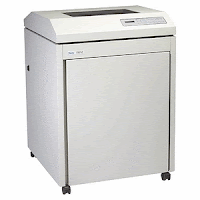Hammer voltage fault problem is a fault usually comes from a line matrix printer model tally genicom 63** and 62** series.When this trouble appear in control panel,a high resistance coil fault has likely occurred in one or more of the hammer coils.In a 63** series a dual mosfet transistor coil driver in a controller board usually found a problem.
62** series 63** series
Model: Tally Genicom
T6212
T6215
T6218
T6306
T6312
In my repair of this trouble,in 63** series,i usually found a defective dual N-channel mosfet transistor(FDS3890),cause by a burnt hammer coils and a shorted or defective hammer bank cables.You can also take a look of hammer voltage faults diagnostic aid table below.
Read this solution from the printer place.
This problem is often caused when one or more of the four ribbon shield guide brackets is mispositioned leaving little or no clearance between it and the coil board assembly. When contact is made between the soldered coil terminal points on the underside of the coil board and the ribbon shield guide, a short occurs. This leads to the possibility of destroyed transistors on the hammer driver board which produces the “hammer voltage fault”.
A visual inspection will determine whether there is a clearance problem between the terminals on the coil board and the ribbon shield guide. If about 0.010” or more (definite clearance by eye) cannot be verified, replace the hammer driver board (the transistor is blown anyhow - PN 082578). At the same time, ohm out the coil board to check for coil damage so that it can be replaced also, if it is damaged (PN 083685).
Prior to reassembly, wrap Kapton tape (or a similar durable insulation type tape) around the ribbon shield guide bracket to prevent metal-to-metal contact.
Obviously, this is most easily accomplished with the hammer driver board and the coil board removed. Watch as you mount the hammer driver board and bias it (move it against the screws) so that there is maximum clearance.













